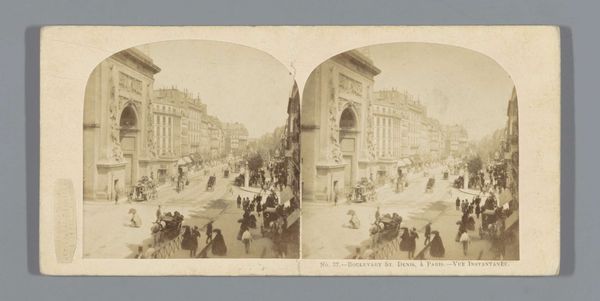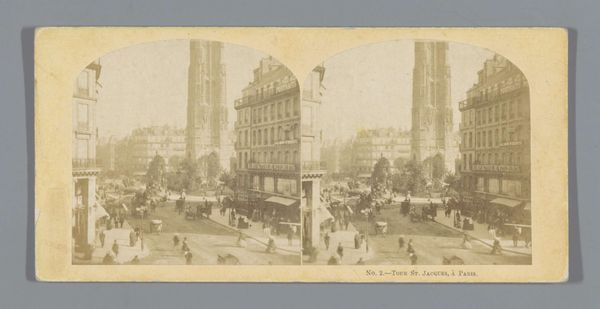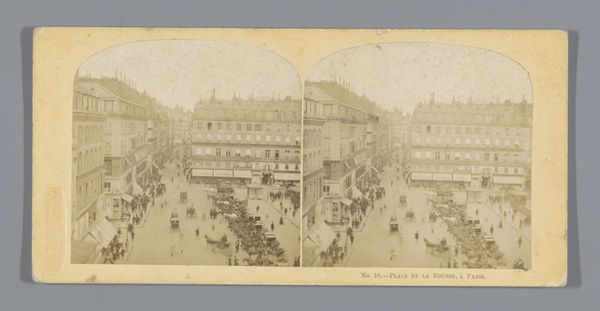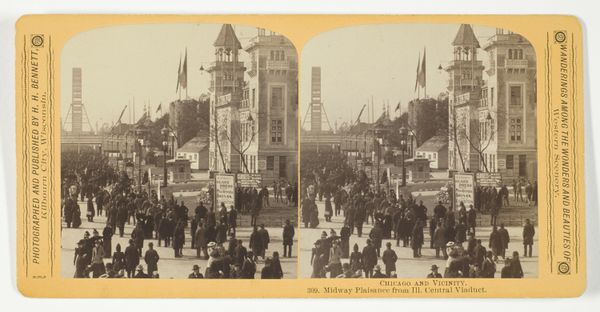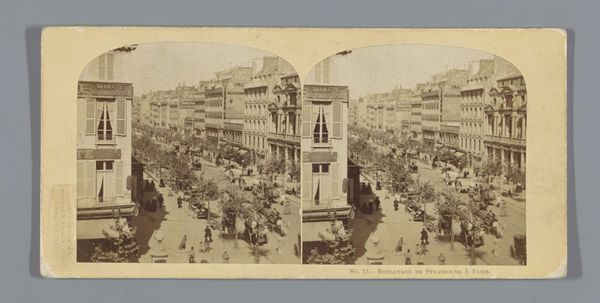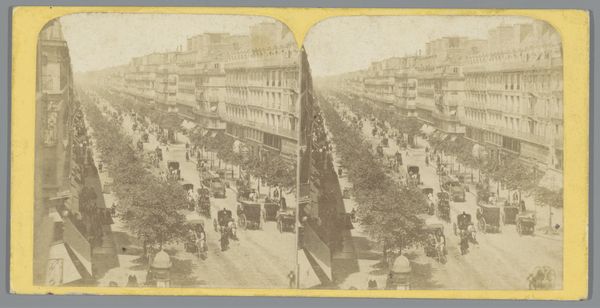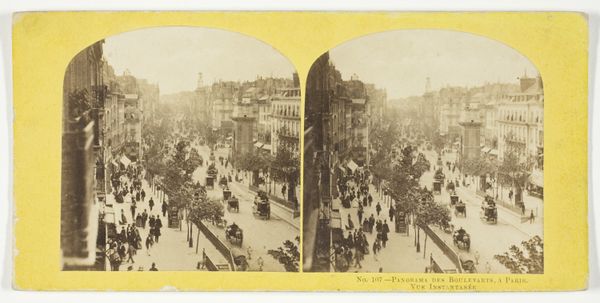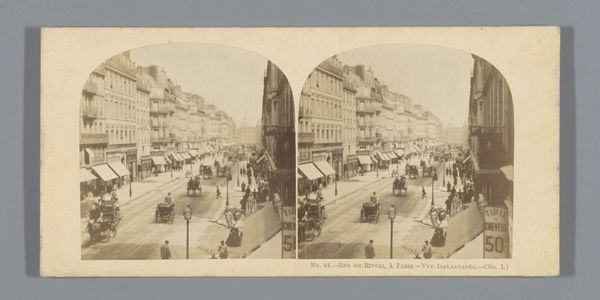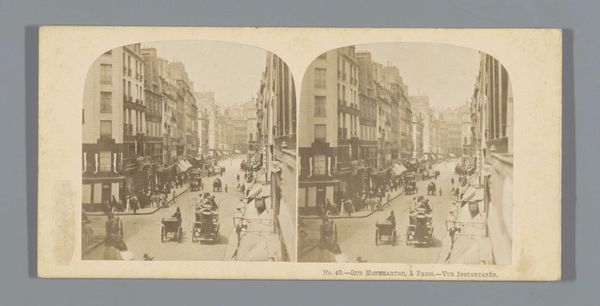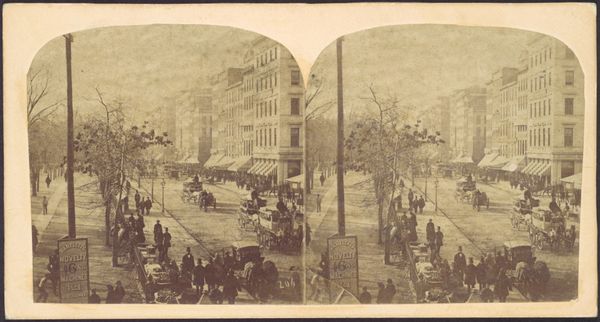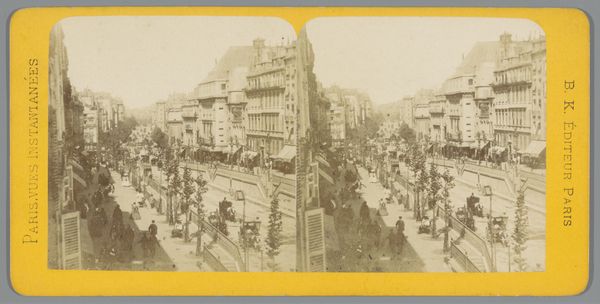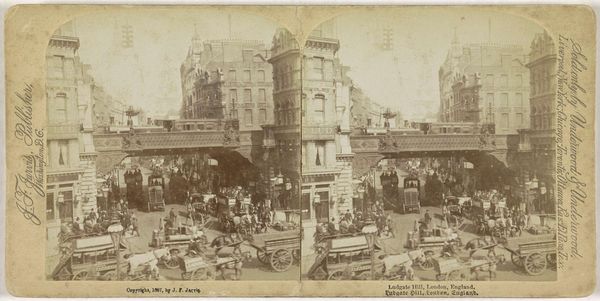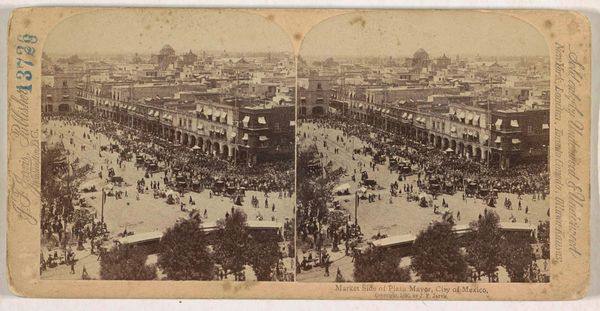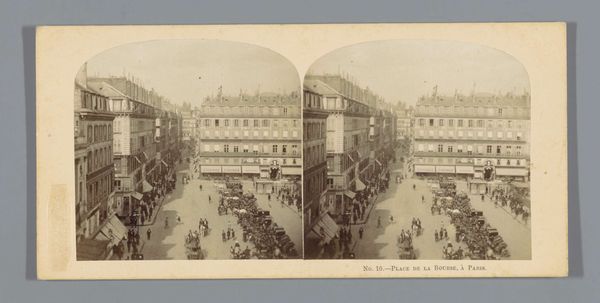
photography
#
impressionism
#
street-photography
#
photography
#
cityscape
#
realism
Dimensions: height 85 mm, width 170 mm
Copyright: Rijks Museum: Open Domain
Curator: Immediately I feel a sense of vibrant city life arrested in time. The dense composition almost hums with implied movement, doesn’t it? Editor: We're looking at a stereoscopic photograph, a card really, produced by the London Stereoscopic Company sometime between 1850 and 1875. It’s titled "Gezicht op een boulevard te Parijs" – A View of a Boulevard in Paris. Curator: Yes, the doubled image creates this incredible sense of depth. What draws me is how this snapshot crystallizes Parisian identity and urban transformation of that era. Look at how small people are. Editor: And look at the grays and sepia. They dictate the mood—reserved, sophisticated. The composition, however, seems traditionally constructed, quite geometric. There's an implied grid connecting the architecture and those vehicles on the boulevard, and how they line the eye. Curator: It also evokes this notion of flânerie – the act of leisurely strolling through a city, observing the interactions. Think of Baudelaire, Walter Benjamin, and their analyses of the urban experience. This photograph embodies that. This piece really speaks to how humans interact with the constructed spaces we design. Editor: The symmetry also provides structure for the chaotic bustle the boulevard. It allows a modern viewer like us a foothold in the representation, almost as if we are invited to dissect and examine each carefully organized section of Parisian life and how its lifeblood circulates. Curator: The medium contributes too! The relative novelty of photography would've shaped how people saw themselves and the world. These images made city life newly visible, transforming personal and cultural identity at the same time. The modern Paris we know starts taking shape right here. Editor: Photography makes things real, certainly, but let's consider its impact on artistic representation. It created an expectation for artists, who had been capturing a scene for centuries. Now they must engage with photography in ways they didn’t before—a fascinating challenge for all kinds of cultural identity. It gave impetus for explorations into new visual and creative vocabularies, Curator: A poignant reflection on the past and what has been left behind. It feels very meaningful today, especially when we consider identity on this hyper-scale that is still being shaped today. Editor: Indeed, what seemed so precise then offers ambiguity now. Time and progress does that.
Comments
No comments
Be the first to comment and join the conversation on the ultimate creative platform.
